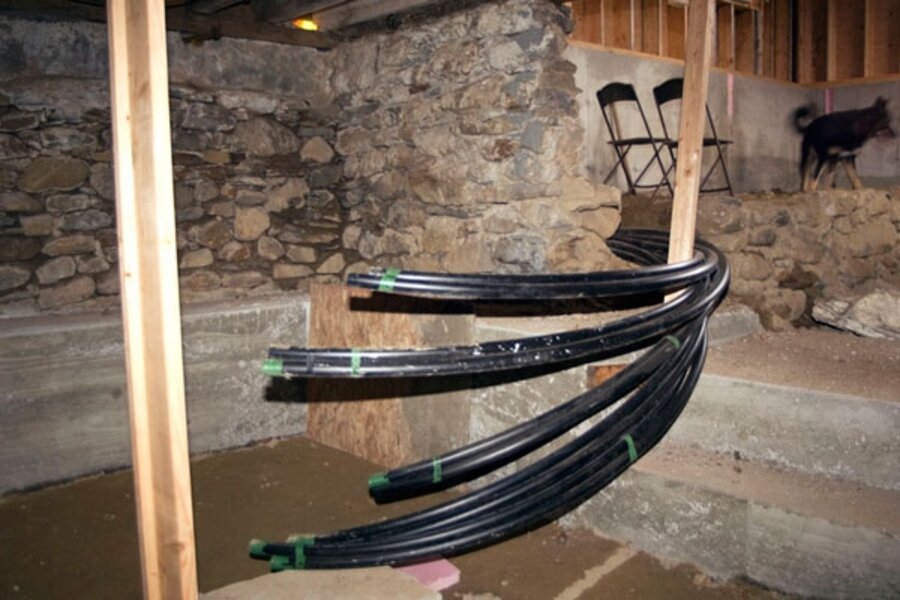Geothermal heating and cooling - why we chose a closed-loop system
Loading...
The wonder of a geothermal heating and cooling system is that it uses use the energy naturally stored in the ground to heat and cool your house.
Some extra juice is needed, of course, to run a heat pump to keep the system operating, but it amounts to a fraction – as little as 30 percent – of what a traditional gas or oil burner would use. Your main source of comfort in your home is just what's under the good green earth.
That was in perfect harmony with my vision of our green renovation of Sheep Dog Hollow, and so it made sense to put it in, even though it cost significantly more than a traditional heating system.
Still, the payback in terms of tax credits and long-term energy savings convinced us that in the long term it was indeed economical – even it appears initially to break the bank.
Next we had to choose what kind of geothermal system to put in. There are several, but the two types most commonly used are a closed loop and an open loop.
The website EarthComfort.com, which is based in Michigan, does a good job of explaining the basic difference between the two:
So what is this open-loop, closed-loop stuff?
The heart of the geothermal systems is the ground loop. An open-loop geothermal system uses well water as a heat source. As the water passes through it, the system extracts heat, reducing the water temperature about 5 degrees F. The water is then returned to the earth, usually by running it on the ground and letting it seep into the aquifer.
A closed-loop system extracts heat from the earth by a series of liquid-filled pipes buried in the ground. The plastic pipes are filled with water and antifreeze. The pipe used in closed loop systems is buried beneath the frost line. The pipe can also be run vertically in bored holes. A typical home will have about 2,000 running feet of pipe in the earth loop. The pipe can have a guaranteed lifetime of 50 years or more.
Tony Silverio, our geothermal contractor, told us that a closed loop is better than an open loop in our situation, even though it doesn’t produce as many BTUs and is more expensive.
OK, that sounds as though we were about to be sold a bill of goods.
But here’s Tony’s explanation: For an open-loop system to work, you have to ensure that the wells you hit produce around 20 to 25 gallons of water per minute, and that water has to be good water, not too acidic or containing many minerals.
“If it has a high or a low pH to it, then you’re just going to end up rotting out the coil in your system in 10 or 12 years,” he says. “I’m OK with that, but you have to understand that 100 percent if you’re going to put in an open-loop system.”
I still wasn't quite convinced. So I decided to call a local well driller who’d been putting geothermal systems in since the 1970s. His name is Ray Sima, and less than five minutes on the phone with him convinced me that a closed-loop system was the way to go.
Ray has nine geothermal systems in his family. He put the first one in his own house in 1979. It was an open-loop system, what Ray calls a “pump and dump” because the water is pumped from one well and then dumped into another.
It was the only geothermal system available at the time at the time, so he put it in. The 30 years' experience he's had with it has convinced him that a closed-loop system is indeed better – even though it appears that in the beginning it may be more expensive.
NEXT: How Ray became a closed-loop man
Editor's note: Alexandra Marks will be blogging twice a week about her green and budget-friendly restoration of a 1902 farmhouse in Connecticut. See a photo gallery of the early days of the project by clicking here. You can read all she's written about the project so far by clicking here and then looking for Sheep Dog Hollow under Topics on the right side of the page.
You'll find numerous articles about the environment at the Monitor’s main environment page. Also, check out our Bright Green blog archive and our RSS feed.





